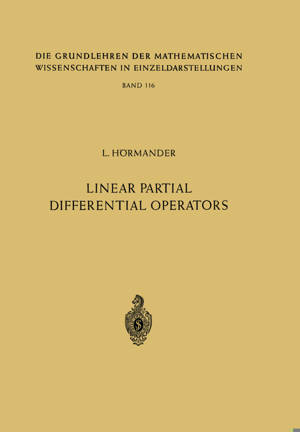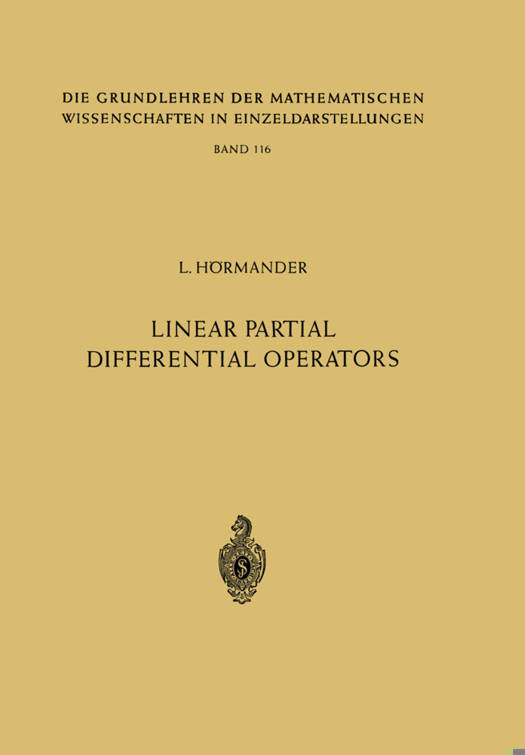
- Afhalen na 1 uur in een winkel met voorraad
- Gratis thuislevering in België vanaf € 30
- Ruim aanbod met 7 miljoen producten
- Afhalen na 1 uur in een winkel met voorraad
- Gratis thuislevering in België vanaf € 30
- Ruim aanbod met 7 miljoen producten
Zoeken
Omschrijving
The aim of this book is to give a systematic study of questions con- cerning existence, uniqueness and regularity of solutions of linear partial differential equations and boundary problems. Let us note explicitly that this program does not contain such topics as eigenfunction expan- sions, although we do give the main facts concerning differential operators which are required for their study. The restriction to linear equations also means that the trouble of achieving minimal assumptions concerning the smoothness of the coefficients of the differential equations studied would not be worth while; we usually assume that they are infinitely differenti- able. Functional analysis and distribution theory form the framework for the theory developed here. However, only classical results of functional analysis are used. The terminology employed is that of BOURBAKI. To make the exposition self-contained we present in Chapter I the elements of distribution theory that are required. With the possible exception of section 1.8, this introductory chapter should be bypassed by a reader who is already familiar with distribution theory.
Specificaties
Betrokkenen
- Auteur(s):
- Uitgeverij:
Inhoud
- Aantal bladzijden:
- 288
- Taal:
- Engels
- Reeks:
- Reeksnummer:
- nr. 116
Eigenschappen
- Productcode (EAN):
- 9783642461774
- Verschijningsdatum:
- 8/03/2012
- Uitvoering:
- Paperback
- Formaat:
- Trade paperback (VS)
- Afmetingen:
- 170 mm x 244 mm
- Gewicht:
- 476 g

Alleen bij Standaard Boekhandel
+ 197 punten op je klantenkaart van Standaard Boekhandel
Beoordelingen
We publiceren alleen reviews die voldoen aan de voorwaarden voor reviews. Bekijk onze voorwaarden voor reviews.








